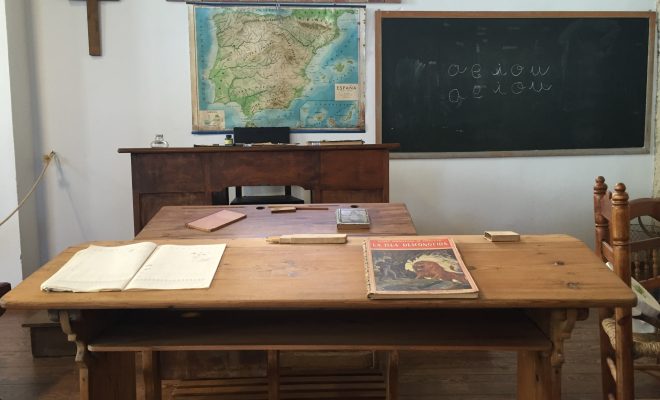100 Accommodations for Students With Learning and Behavioral Disabilities

Just 100 simple interventions that you can use to help learning disabled students succeed.
- Provide study carrels.
- Use room dividers.
- Provide headsets to muffle noise.
- Seat learner away from doors and windows.
- Seat learner near model.
- Provide a time-out area.
- Rearrange learner groups.
- Group for cooperative learning.
- Vary working surfaces.
- Simplify and/or shorten instructions.
- Give both oral and written directions.
- Have learner repeat directions.
- Have learner repeat learning objective.
- Ask frequent questions.
- Change question level.
- Change response format
- Provide sequential directions.
- Use manipulatives.
- Alter objective criterion level.
- Provide functional tasks
- Reduce the number of items on a task.
- Highlight relevant words/features.
- Use picture directions.
- Provide guided practice.
- Provide practice.
- Increase allocated time.
- Use a strategic approach.
- Change reinforcers.
- Increase reinforcement frequency.
- Delay reinforcement.
- Increase wait time.
- Use physical warm-up exercises.
- Use specific rather than general praise.
- Have a peer tutor program.
- Provide frequent review
- Have the learner summarize at the end of the lesson.
- Use self-correcting materials.
- Adapt test items for differing response methods.
- Teach mnemonic devices.
- Provide reinforcers.
- Use behavioral contracts
- Establish routines for everything.
- Use timers to show allocated time.
- Teach self-correctio.
- Provide visual cues.
- Block out extraneous stimuli on written material.
- Tape-record directions.
- Tape-record learner responses.
- Use a study guide.
- Provide a critical vocabulary list for the content material.
- Provide a key fact list.
- Use clock faces to teach time
- Use dotted lines to align up math problems.
- Provide directions for transitions.
- Assign only one assignment at a time.
- Provide discussion questions.
- Use word markers for reading.
- Alter sequence.
- Highlight keywords on test items.
- Provide assignment sheets.
- Post schedule.
- Use graph paper for place value.
- Provide cues.
- Establish rules and review frequently.
- Teach major direction words.
- Use practice.
- Provide pencil grips.
- Tape paper to desk or table
- Shorten assignments into daily tasks.
- Segment directions.
- Number assignments to be completed.
- Change far-point to near-point material for copying.
- Put desk close to the board.
- Integrate currently popular characters into assignments for motivation.
- Repeat significant points.
- Use physical cues while speaking.
- Pause during speaking.
- Use verbal cues.
- Change tone of voice, whisper, etc.
- Use an honor system.
- Collect notebooks weekly to review learner’s notes.
- Reorganize exams to go from easy to hard.
- Color code place value assignments.
- Use autodidatic materials.
- Do only odd or even-numbered items.
- Use a typewriter or large print for written material.
- Provide organizers for desk materials.
- Teach varied reading rates.
- Provide content/lecture summaries.
- Use peer-medicated strategies.
- Call the learner’s name before asking a question.
- Use extra spaces between lines of print.
- Color code materials/directions.
- Use raised-line paper.
- Provide calculators.
- Circle math computation sign.
- Use hand signals to cue behavior.
- Establish a rationale for learning.
- Use advance organizers.
- Help learners develop their own learning strategies.






